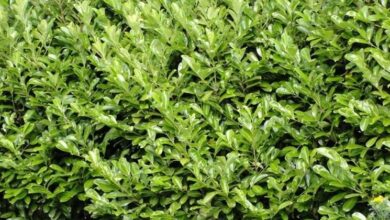The main care of carnivorous plants in winter

Are you interested in knowing more about the care of carnivorous plants? If you have one or are going to buy it, think about the fall and winter that are to come. The cold, the first frosts and excessive humidity are not good for these plants. But since nothing is impossible, then I leave a series of tips to follow in times of cold.
Choose a species that is resistant to cold

Obviously most of the species of carnivorous plants that exist, are tropical or subtropical. Because of this, many varieties do not resist cold or frost, but we can always count on a slightly different species.
Choosing the plants of the genus «Sarracenia» or the «Dionaea» are a sure hit, since they can withstand lower temperatures (between 5ºC to -3ºC or less) . This does not mean that they can always do it, in any case they resist if they are specific and short-term frosts.
The best thing you can do for your plant is to change their location or cover them, if they are outdoors. If you ignore these tips, it is most likely that your plant does not withstand low temperatures and ends up dying, despite its hibernation.
Caring for carnivorous plants: saving energy in winter

These plants are very intelligent and with the arrival of winter or cold seasons they stop their growth and hibernation begins. In this process we may believe that our plant is sick, and nothing is so far from reality. Our carnivorous plant is in the process of hibernation. This occurs when the temperature drops below 15ºC and thus to be able to save energy would go until the next season, spring.
Caring for carnivorous plants: change of location

With the arrival of the cold, the rains and the first frosts, it is better to change the location of the pots and planters. Especially when we live in areas where there are many prolonged frosts. The pots can be put inside the house or in a greenhouse.
Of course, when moving the pots we will try to avoid touching them a lot or handling them roughly. These plants, like so many others, become stressed when being moved. Although it is the best we can do for them, as long as we can relocate them and put them where there is no current of any kind and the temperature is mild.
If you have carnivorous plants planted in the ground then you should cover them well. In this way you will prevent them from being unprotected and at the mercy of inclement weather. Some carnivorous plants that hibernate without problems are «Sarracenias», «Heliamphoras» and «Dionaeas».
Caring for carnivorous plants: avoid excessive watering

In winter or in cold seasons, the hibernation of carnivorous plants makes them not grow, so they need very little water . Irrigation, in this case, it is better to space them … and even more so in times of rain.
It is a very good idea to vary the frequency of irrigation, also depending on where we have the plant , and use a spray when we have to carry it out. In this way we can wet the earth avoiding the leaves.
Generally these plants must have a moist substrate, not dry or flooded with water. We should not let the substrate dry out, but neither should it soak up unless they are plants of muddy species. Remember that in winter they do not need as much water and less outdoor plants , when there is rain.
Carnivorous plant care: light is an important factor

Although we are in cold seasons the exposure of the plant to the sun, it will thank you. This will also depend on the species we have. There are some plants that need more sunlight like the North American carnivores and the flytrap. For this reason, when relocating the plant (if necessary) look for an area without currents and where it can get some sun.
Carnivorous outdoor plants

What is one of the perfect outdoor plants? The one known by the name of «flytrap» is an exotic species that grows perfectly outdoors. With adequate sunlight and protection for the harshest winters , they are quite hardy species.
If you like this type of plants, choose ones that have greater resistance to frost and cold, and decorate the garden or patio of your house with them. Some of these plants look great in a single container, very decorative.
Avoid fertilizers on these types of plants

Although many think otherwise, these types of plants do not need fertilizers. These products can kill their roots and, consequently, the plant. In carnivorous plants of the pitcher type, which many of you will have seen, it interrupts its growth and leaves it completely useless . So avoid using any type of fertilizer, even if the label says otherwise. It is only advice, but effective.
Feeding of carnivorous plants

This is something that seems almost hypnotic to some, but although it is true that these plants can eat almost everything … it is better not to overfeed or force them. This could kill her, as well as give her meat ; it contains an excess of nitrogen for the plant.
Indoor carnivorous plants if you have to feed them, if you see that they do not hunt anything. But outdoor plants know when they have or can eat and when they can’t. So by not having a fixed schedule we must let them catch their own food. Do you want to know more about how to feed carnivorous plants ?
Other tips to avoid frost

In order not to have problems with frost and our carnivorous plants, the best we can do is remove the plate from under the pot. This dish that serves to keep humidity and also to get rid of excess humidity, in winter it could freeze . As we do not want anything to happen to the roots of the plant, it is better to remove it from the set, until spring. Do you want to know more about how to protect pots from frost ?
Hibernation of the carnivorous plant Venus Flytrap
The one also called Dionaea, as I have commented above, establishes a hibernation process; Like other carnivorous plants, it does it to save energy and get to spring. At first it may seem that the plant is withered or even dead, but we will see later that it is not.
If you are more interested in getting a little information, take a look at this video that I have seen on the «Carnivoritas» channel. It tries to show us what the hibernation stage of a carnivorous plant consists of, in this case the Flytrap , and the care and preparation for these moments.
What do you think of these carnivorous plant care? Do you want to see some ideas to decorate with flowers in autumn ?




